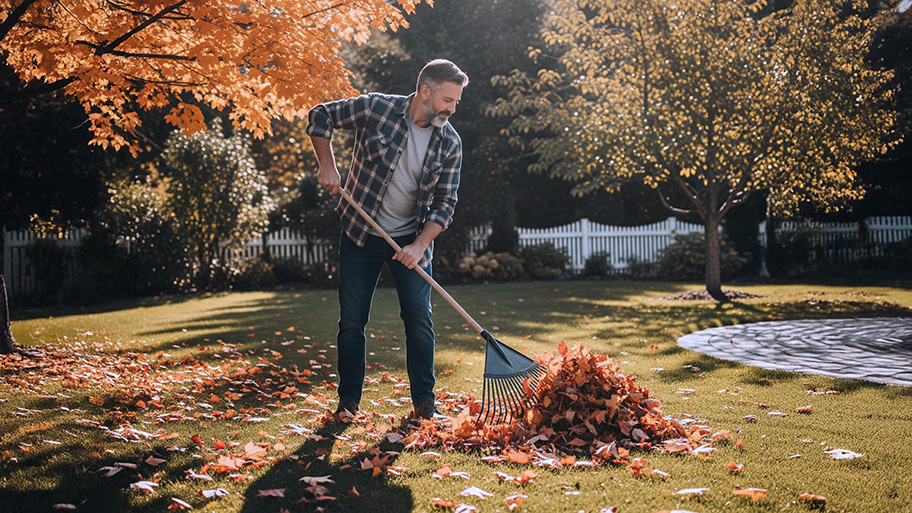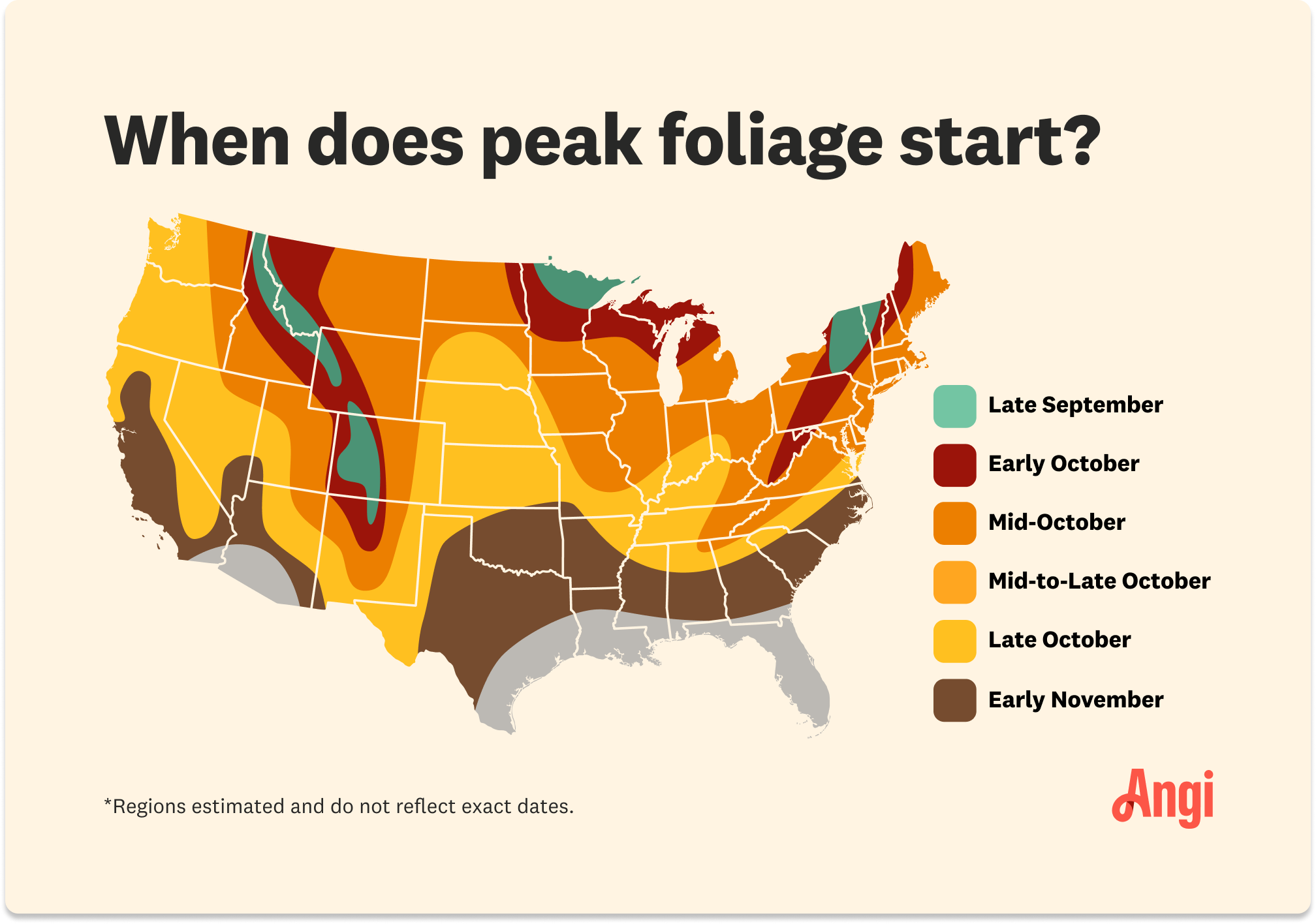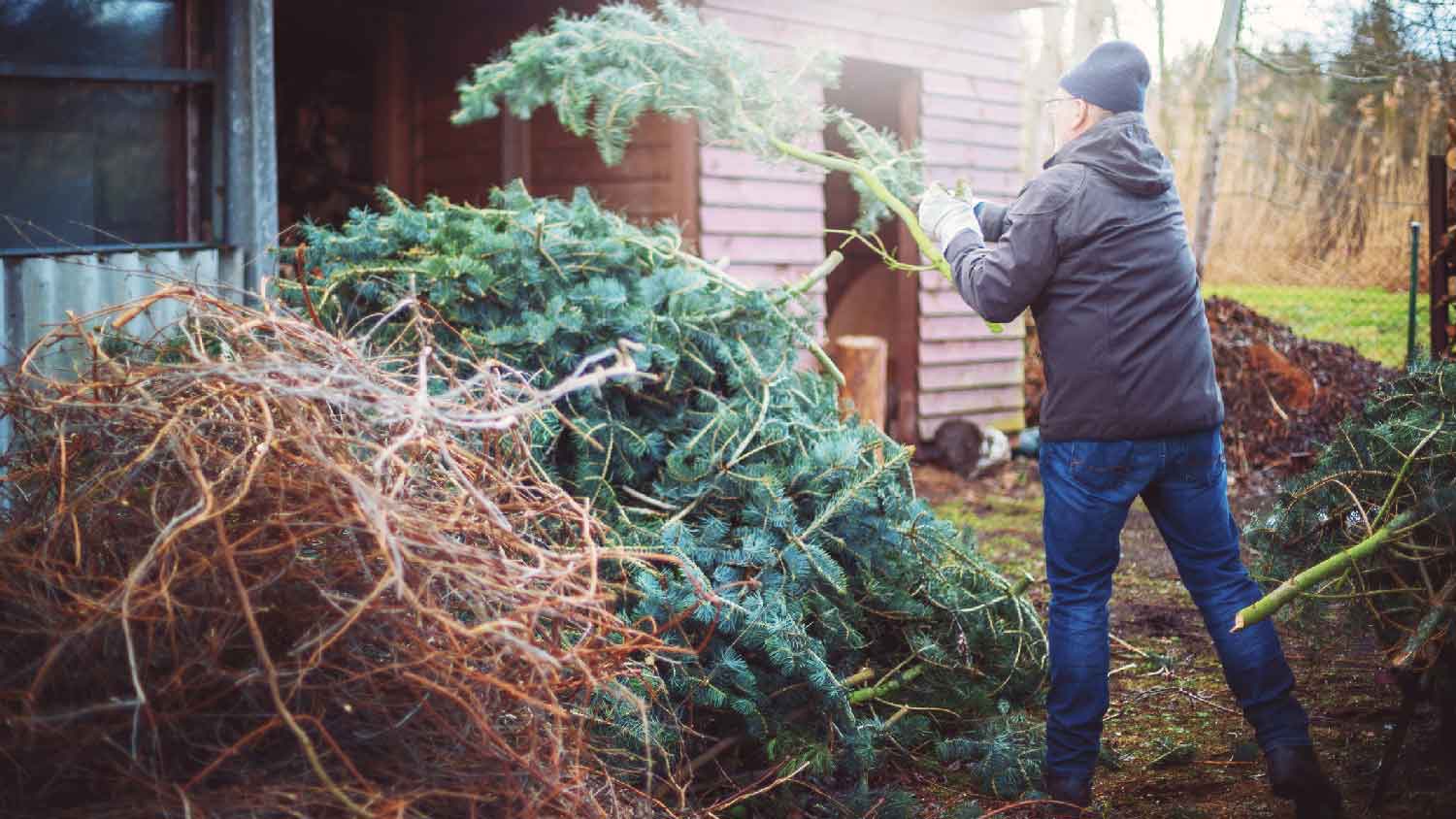
A yard cleanup can keep your lawn clean and prepare it for the next season. Find out the average yard cleanup cost and what can affect it.
The timing of fall foliage depends on weather patterns


Leaves fall about one week after peak foliage.
Peak foliage and leaf fall dates vary from early October to mid-November depending on the location.
Warm, sunny days followed by cool nights will accelerate leaves changing and falling.
With the fall equinox comes fewer daylight hours, crisp air, and the brilliant golds, oranges, and burgundies of changing leaves. As we bid adieu to summer, it begs the question—when do leaves start to fall? Here’s when you can grab a pumpkin spice latte and drink in the views, and when it will be time to bring out the rake.

Various natural compounds found within trees are responsible for the array of colors we see throughout the year. Chlorophyll—the substance that makes healthy trees look vibrant green in spring and summer—gets produced via photosynthesis, the vital conversion of sunlight into energy that fuels the tree’s growth.
During the summertime, trees saturate their leaves with chlorophyll, opportunistically harnessing maximum energy from the season’s sunlight. This effort to accumulate and store energy helps ready the tree for the impending winter. As autumn approaches and temperatures begin to dip, the synthesis of chlorophyll halts. Consequently, this provides an opportunity for other compounds within the leaves to manifest their autumnal colors.
Once days become shorter and temperatures drop in the transition from summer to fall, trees initiate the process of shedding leaves as a way to conserve energy and protect themselves from potential freezing damage. This gradual detachment of leaves is known as leaf abscission. Starting at the base of each leaf’s stem, there’s a progressive weakening of the connection between the leaf and the branch, ultimately leading to its detachment from the tree.

The most brilliant exhibitions of fall foliage happen after a series of warm, sunny days followed by crisp, cool nights. As climates vary across the U.S., where you live plays a key role in when trees display peak foliage.
Most parts of the U.S. will see peak foliage in early to mid-October. For the Pacific Northwest and Eastern and Western coastal regions, peak foliage arrives a bit later: from mid-to-late October. Southern states such as Alabama, Arkansas, and Georgia see the most fall colors beginning in the last two weeks of October into early November. States in the far South such as Texas and Florida have the latest dates for peak displays: early-to-mid November.

Typically, leaves start to fall roughly one week after they display their peak foliage colors. Depending on where you live, this means it may be time to rake your yard as early as mid-October or as late as mid-November. Factors such as a delayed spring or a severe summer drought can lead to later than usual color changes and, as a result, leaves will fall later as well.
After autumn’s colorful displays comes the need to deal with the seemingly endless piles of fallen leaves. Some homeowners may choose to leave the leaves, but most people with lots of leaves on their lawn will decide to either mulch or rake the leaves. You could also get in contact with a local leaf removal company if you’d rather spend your time sipping lattes and cozied up inside.
Aside from managing the leaves in your yard, it’s also important to make sure you’re keeping stray leaves from clogging your gutters. There are multiple ways that clogged gutters can damage a home, so be sure to clear them regularly. Adding gutter guards such as LeafFilter will cost you more upfront but can help block debris from entering and clogging your gutters, thus minimizing the amount of maintenance you need to do.
From average costs to expert advice, get all the answers you need to get your job done.

A yard cleanup can keep your lawn clean and prepare it for the next season. Find out the average yard cleanup cost and what can affect it.

Autumn leaves are beautiful but also leave quite a mess to clean up. This guide will help you budget for your leaf removal cost this fall.

Allowing leaves to decompose naturally can add vital nutrients back into your soil. Learn whether you should rake leaves and why.

Leaves are bound to fall, but how long will they stay there? Learn how long it takes for leaves to decompose and how you can speed up the process.

If your yard has seen better days, a professional clean-up may be in order. Use these lawn care questions to prep yourself for a conversation with a pro.

Determining how to clean up fallen leaves can be a real chore. Consider time, tools, and environment when choosing between raking or mulching leaves.